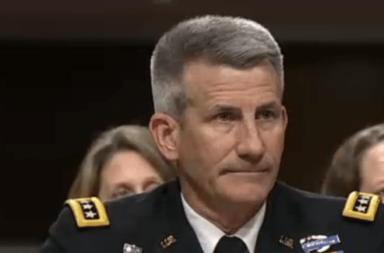President Obama has announced that the US will draw down its troops in Afghanistan from 9,800 to 8,400, altering his original plan to reduce the number to 5,500. His decision suggests that conditions on the ground are not as promising as he expected them to be, and maintaining a larger number of troops is important as he believes “it is in our national security interests…that we give our Afghan partners the best opportunities to succeed.” The president, however, did not spell out what success actually means. If he meant that Afghanistan will eventually become a stable and functioning democracy, he is fundamentally mistaken.
Indeed, even if the US stations three times as many troops for another 15 years or more, given the multiple conflicts, ruthlessness, and duplicity of the players involved and the country’s long history, the US cannot rescue Afghanistan from the quagmire in which it finds itself.
The president’s concluding remarks strongly suggest that the US’ military presence in Afghanistan is essentially open-ended, saying: “…given the enormous challenges they face, the Afghan people will need the partnership of the world, led by the United States, for many years to come.” [emphasis added]
The facts on the ground remind us of the Vietnam War—a needlessly prolonged conflict with no prospect of victory—except that the war in Afghanistan is even more complicated and becoming increasingly intractable. To understand what the US strategy should be to end a war that has lasted more than any other in US history, consider the following:
First, Afghanistan is a landlocked country with a rugged and mountainous terrain replete with thousands of caves, some of which are miles long and familiar only to the indigenous population. Historically, no power has been able to conquer and sustain its conquest of Afghanistan from the time of Alexander the Great, including the Mongols, the British Empire, and Soviet Russia.
Demographically, the country has a population of 32 million, 99 percent of whom are Muslims, composed of tribes and kinship-based groups in a multilingual and multi-ethnic society. As such, the country is politically divided and lacks social and political cohesiveness.
Second, given the history and determination of the Taliban, bringing them to submission was always a non-starter. Even though the US is fully aware that many Taliban militants operate from safe havens inside Pakistan and other hard-to-reach areas, the US is still unwilling to confront Pakistan, giving the Taliban no incentive to negotiate in earnest.
As long as this situation remains unchanged, the touch and go negotiations over the past 14 years will lead to nowhere. Just like the Vietcong, the Taliban strongly feel that they will eventually wear out any government in Kabul, and will keep fighting and make all the sacrifices until they exhaust the US and eventually prevail.
Third, Afghanistan’s border with Pakistan—the Durand Line—stretches through the entire southern and eastern boundary between the two countries and is poorly delineated and unprotected. It divides the Pashtun tribes of the region between Afghanistan and Pakistan and has been a source of increasing tension between the two countries, which explains Pakistan’s unique concerns and determination to protect its national interests and have a say about Afghanistan’s current and future political order.
There is concrete evidence, revealed by the former head of Afghanistan’s main intelligence agency, Rahmatullah Nabil, that Pakistan fully supports the Afghani Taliban to achieve a dual purpose: maintain its influence in Afghanistan, and prevent India from establishing a presence in the country, thereby thwarting any effort by New Delhi from encircling it.
Chris Alexander, Canada’s former Citizenship and Immigration Minister and former Ambassador to Afghanistan, flatly stated “Canada and its allies must take a united front against Pakistan because it is a sponsor of terrorism that threatens world security.” That said, the Obama administration was and still is unwilling to confront Pakistan because the US views the country as an ally in the war on terror, and the Pakistani military serves to secure the US’ strategic interests in south and central Asia.
Fourth, the growing presence of ISIS and the return of strong elements of al-Qaeda, numbering between 1,000 and 3,000 fighters, have become increasingly evident in the mountainous region along the Pakistani border. Their recent attack against the Hazara minority killed 80 people, presumably because members of the community provided some support to the Assad regime in Syria. US military spokesman Brigadier General Charles Cleveland aptly put it: “That’s our concern, these high profile attacks, they are effective because they’re not that difficult to achieve.”
It can be expected that ISIS attacks will become more frequent, especially because of its steady retreat in Iraq and Syria, while further destabilizing Afghanistan and complicating the war efforts regardless of the extent of the US’ continuing military backing.
Fifth, the premature introduction of democracy to Afghanistan is inconsistent with the culture of tribalism and dominance of Islam orthodoxy in the country. Although the new constitution recognizes gender equality, participatory politics, and some civic and political rights, it has also institutionalized tribal nationalism and ethnic hierarchy.
Given the above, one might ask why did the US, under both the Bush and Obama administrations, feel that it could go to any Muslim country, such as Iraq, Libya, Afghanistan, and others, ravage them, and then impose political values of which they are not disposed or willing to accept?
Afghanistan’s social and political setting makes it prone to ethnic and civil wars and the breakdown of state institutions. The West can at best provide only a model of democracy, and has no business going far and wide to promote its political culture which is alien to the natives and doing so under the gun no less.
This Vietnam syndrome must come to an end in Afghanistan. It is reminiscent of a slot machine gambler who pours money into the machine, hoping to get the jackpot that never materializes, finally leaving the machine exasperated and broke. Neither Bush nor Obama learned the bitter lessons of Vietnam, and both poured money and resources into a failing enterprise with no end in sight.
After the US officially spent more than $650 billion in the fight against the Taliban and al-Qaeda, in addition to $150 billion contributed by other allied countries, Afghanistan remains a mess. Bribes and favoritism are pandemic, and hundreds of millions are skimmed by corrupt officials, over which hardly anyone frowns.
As things stand now, the four-nation group (comprised of Afghanistan, China, Pakistan and the US) has no plans to resume the negotiations with the Taliban, who has refused to participate in any negotiations since January. They fundamentally disagree about the political framework that should govern Afghanistan in the future.
The next US administration must change course and develop an exit strategy that offers some face saving way out. An agreement that all conflicting parties should accept rests on three pillars:
It is a given that the Taliban must be an integral part of any future government, as long as they commit themselves to basic human rights, specifically in connection with women, and prevent al-Qaeda and other extremist groups (including ISIS) from using Afghanistan as a launching pad for terrorist attacks against the US or any of its allies.
The moral argument against the Taliban has to be based on religious precepts to which they can relate and would enable them to change their ways without losing face. For example, there is nothing in the Koran that permits discrimination against women – rather, we find a defense of gender equality: “I shall not lose sight of the labor of any of you who labors in My way; be it man or woman; each of you is equal to the other.” (3:195) Nor is there any indication in the Koran that women are not permitted to receive an education.
Pakistan will have to be, for the reasons cited above, part and parcel of any solution to protect its national security interests and prevent India from meddling in Afghani affairs. Islamabad must also commit to ridding the country of radical Islamists, especially al-Qaeda. From everything we know, Pakistan and the Taliban can agree on such a political formula. The US should withdraw its forces from the country over a period of a couple of years, leaving behind a contingency of a few hundred military personnel, along with a UN presence, to monitor and ensure compliance with the agreement.
After 15 years of fighting, hundreds of billions of dollars spent, and tens of thousands killed on both sides, Afghanistan is not better off today than it was immediately following the collapse of the Taliban regime. The upcoming American administration must commit itself to ending Afghanistan’s quagmire, because short of a negotiated agreement, there will be no victory against the Taliban any more than America’s disguised defeat in Vietnam.
Photo: US soldiers remember 9/11 in Afghanistan: the reason for the engagement in this country in 2001- DoD




